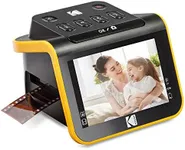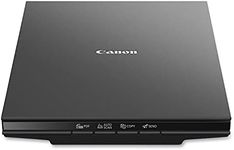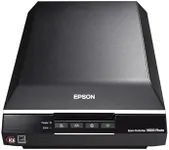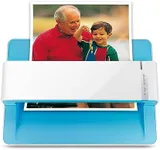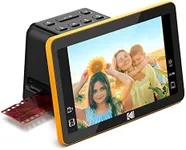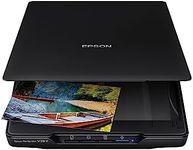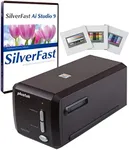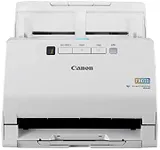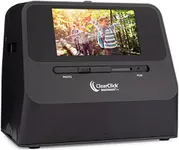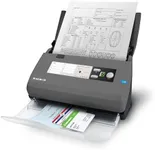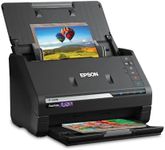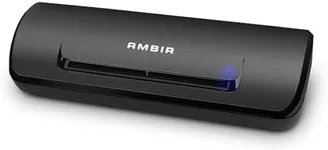Buying Guide for the Best Photo Slides Scanners
When choosing a photo slide scanner, it's important to consider several key specifications to ensure you get the best fit for your needs. A photo slide scanner is a device that converts physical slides and negatives into digital images. The right scanner can help you preserve your memories with high quality and ease of use. Here are the key specs to consider and how to navigate them.ResolutionResolution is measured in dots per inch (DPI) and determines the level of detail the scanner can capture. Higher DPI means more detail and larger file sizes. For general use, a resolution of 2400 DPI is usually sufficient. If you need to capture very fine details, such as for professional archiving or large prints, look for a scanner with 4800 DPI or higher. Consider your end use: if you plan to print large photos or need high detail, go for higher DPI; for web use or small prints, lower DPI will suffice.
Color DepthColor depth, measured in bits, indicates how many colors the scanner can capture. Higher color depth means more accurate and vibrant colors. Most scanners offer 24-bit color depth, which is adequate for most users. However, if you need professional-grade scans with the most accurate color reproduction, look for scanners with 48-bit color depth. Think about how important color accuracy is for your projects; for professional or high-quality prints, higher color depth is beneficial.
Scan SpeedScan speed refers to how quickly the scanner can process each slide or negative. This is usually measured in seconds per scan. Faster scan speeds are beneficial if you have a large number of slides to digitize. For occasional use, scan speed may not be as critical. If you have a large collection to digitize, look for a scanner with faster speeds to save time. For smaller projects, slower speeds may be acceptable.
CompatibilityCompatibility refers to the operating systems and software that the scanner can work with. Ensure the scanner is compatible with your computer's operating system (Windows, macOS, etc.) and check if it comes with or supports software that meets your needs. Some scanners come with advanced software for editing and organizing your scans. Make sure the scanner you choose is compatible with your current setup and any software requirements you have.
ConnectivityConnectivity options include USB, Wi-Fi, and sometimes even Bluetooth. USB is the most common and reliable connection method. Wi-Fi connectivity allows for wireless scanning, which can be convenient if you want to place the scanner away from your computer. Consider how you plan to use the scanner: if you need flexibility and convenience, Wi-Fi might be a good option; if you prefer a stable and straightforward connection, USB is typically sufficient.
Size and PortabilityThe size and portability of the scanner can be important depending on your workspace and how often you need to move the scanner. Smaller, portable scanners are great for limited space and easy storage, but they might have fewer features. Larger scanners often offer more advanced features and higher quality scans. Think about where you will use the scanner and how often you need to move it. Choose a size that fits your space and meets your feature requirements.
Additional FeaturesAdditional features can include things like dust and scratch removal, automatic color correction, and batch scanning capabilities. These features can save you time and improve the quality of your scans. Dust and scratch removal is particularly useful for older slides. Automatic color correction can help restore faded images. Batch scanning allows you to scan multiple slides at once, which is a huge time-saver. Consider which additional features will be most beneficial for your specific needs.
